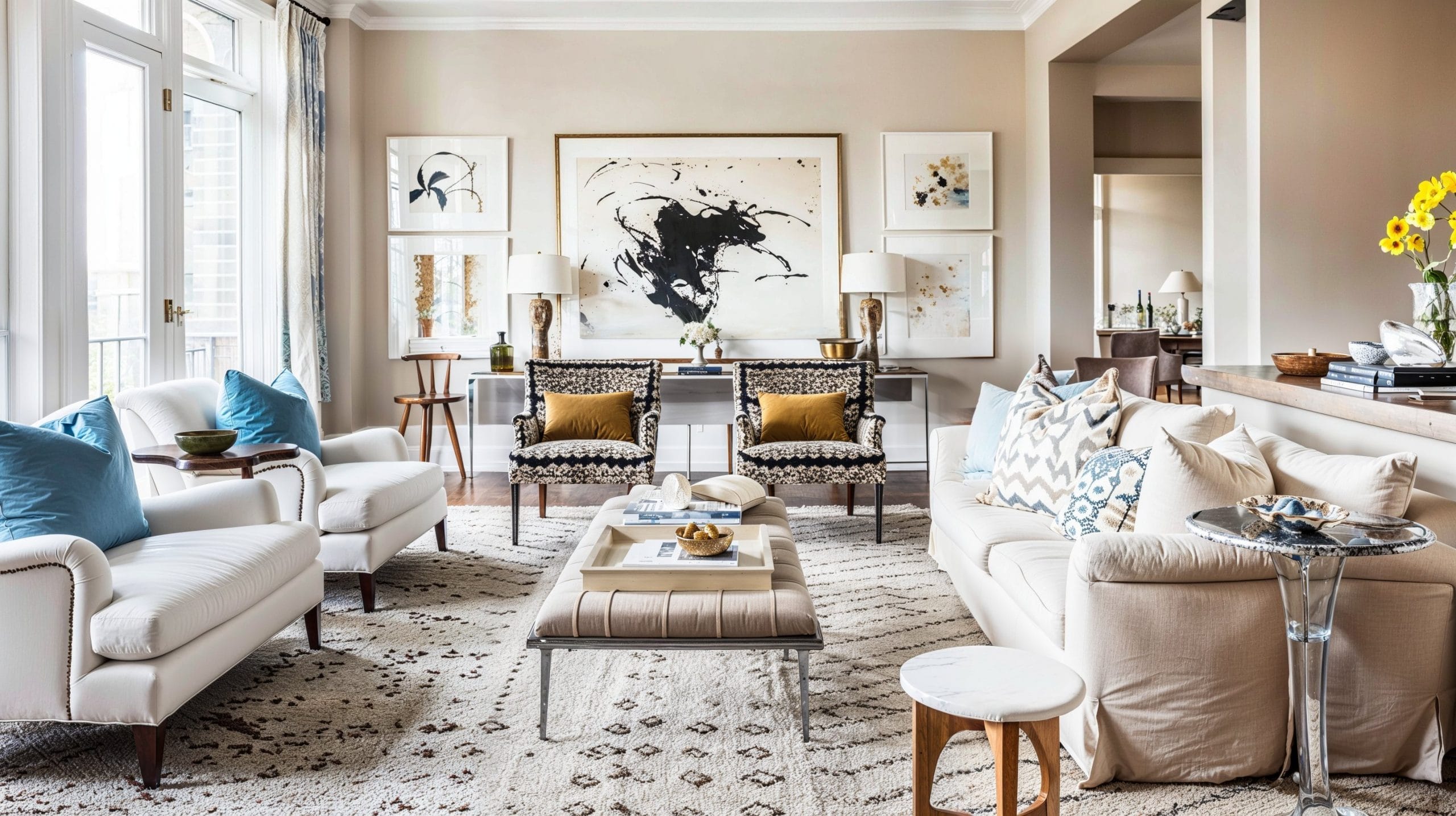Transform your space with expert miami interior design tailored to your style and needs.
Transform your space with expert miami interior design tailored to your style and needs.
Blog Article
Change Your Home With Necessary Principles of Interior Decoration and Aesthetics
The art of changing your home with the essential concepts of indoor style and appearance calls for a thoughtful approach that integrates shade, equilibrium, and spatial awareness. By comprehending the impact of shade theory and the importance of structure and patterns, one can produce rooms that are not just visually attractive but likewise deeply individual. Achieving this balance includes more than plain decoration; it includes a calculated plan and a keen understanding of how each component connects within a space. As we discover these foundational principles, consider just how they might redefine your understanding of home and personal expression.
Understanding Shade Theory
Comprehending the principles of color concept allows designers to develop spaces that resonate emotionally with owners while meeting functional needs. Each classification plays a crucial role in developing harmony within a space.
The emotional impact of colors is profound; cozy colors such as reds and oranges stimulate energy and heat, while cool tones like blues and greens promote peace and serenity. The usage of corresponding colors boosts aesthetic passion, creating striking contrasts that can raise a room's charm.
Neutral shades, on the other hand, act as a flexible backdrop, permitting other style aspects to radiate. It is essential to take into consideration variables such as lights and the space's objective when selecting a shade combination, as these can alter the understanding of shades throughout the day.
Inevitably, a well-considered shade scheme can transform a room, cultivating a feeling of convenience and style that lines up with the inhabitants' preferences. Proficiency of shade concept is, as a result, a vital ability for any interior developer intending to develop unified and inviting settings.
Attaining Balance in Layout
Exactly how can designers achieve a sense of balance in their rooms? Achieving equilibrium in layout is fundamental to producing unified interiors.
Asymmetrical balance, on the other hand, relies upon differing aspects that still accomplish a cohesive look. This technique permits more vibrant and informal setups, giving interest while maintaining stability. By thoroughly picking differing dimensions, colors, and appearances, developers can produce a visually compelling space that feels well balanced yet energetic.
Radial equilibrium stresses a main focal factor with components radiating outside. This style is typically seen in circular designs, where furnishings and design create a cohesive border that attracts the eye inward.
Eventually, achieving equilibrium calls for thoughtful factor to consider of scale, percentage, and the relationships between aspects. interior design firms. By skillfully applying these balance concepts, designers can change areas right into environments that really feel both aesthetically pleasing and functionally harmonious, enhancing the total experience for residents
Relevance of Spatial Recognition

A keen sense of spatial understanding allows developers to identify centerpieces within an area, directing the viewer's interest to vital attributes while keeping an overall sense of unity. It also helps in the strategic placement of lights, which can considerably influence the assumption of area and mood. Understanding spatial connections makes it possible for the designer to cater to the specific requirements of citizens, ensuring that each area offers its designated purpose without compromising visual appeals.
Eventually, spatial awareness is important for making best use of the possibility of any kind of interior room. By thoroughly considering the interaction between measurements, design, and function, designers can develop settings that not only fulfill practical needs however also evoke a sense of comfort and appeal, enhancing the total living experience.
Incorporating Structure and Patterns
Embracing a diverse series of structures and patterns can considerably boost the visual and tactile allure of an interior area. The tactical use of various products-- such as timber, steel, textile, and stone-- produces deepness and passion, making an area really feel much more inviting and dynamic. Incorporating smooth surfaces with harsh textures can establish a balance that attracts the eye and involves the detects.
When resource including patterns, consider both range and rep. Huge patterns can serve as centerpieces, while smaller, refined styles can complement other aspects without frustrating the space. Layering patterns, such as pairing flower pillows with candy striped tosses, includes complexity and a feeling of harmony if carried out thoughtfully.
It is additionally essential to maintain a cohesive color combination, guaranteeing that structures and patterns function together instead of compete for focus. By picking a couple of essential structures and patterns, you can create a combined aesthetic that mirrors your individual design while improving the total ambiance of the space. Ultimately, the cautious consolidation of these elements can transform an ordinary room into a sophisticated environment abundant with character and warmth.
Individualizing Your Area
Creating an area that mirrors your individuality is important to attaining a genuinely inviting environment. Customization in indoor layout allows you other to infuse your distinct design and passions into your home, transforming it from a simple shelter right have a peek at this site into a sanctuary that talks with who you are. Begin by picking a shade combination that resonates with your emotions-- strong colors can energize, while soft tones provide tranquility.
Include artwork and decoration that reflect your passions, whether it be travel, nature, or abstract concepts. Showing personal collections, such as books, photographs, or souvenirs, can evoke cherished memories and create centerpieces within an area. Furthermore, consider personalizing practical items, like upholstered furnishings, to line up with your aesthetic choices.

Final Thought
Finally, the change of a home with the essential concepts of interior layout and aesthetics requires an extensive understanding of color concept, equilibrium, spatial understanding, structure, and customization. Each component contributes substantially to creating a harmonious and functional living atmosphere - miami luxury interior design. By attentively integrating these concepts, individuals can enhance the aesthetic charm and psychological vibration of their rooms, ultimately cultivating a home that reflects distinct identities while providing comfort and practicality
Report this page